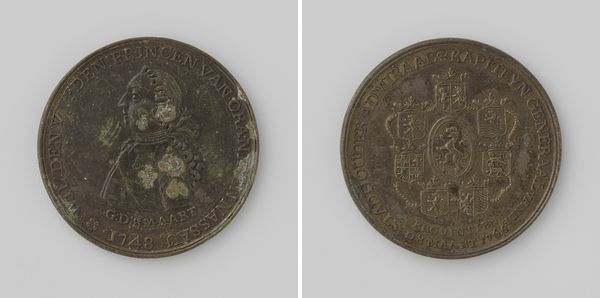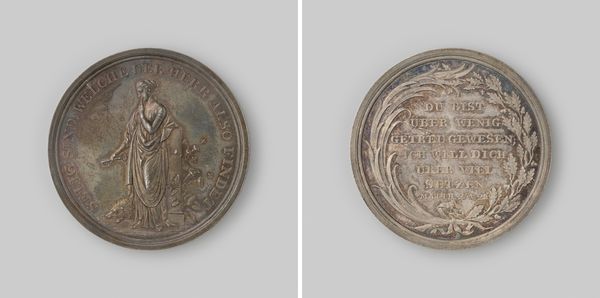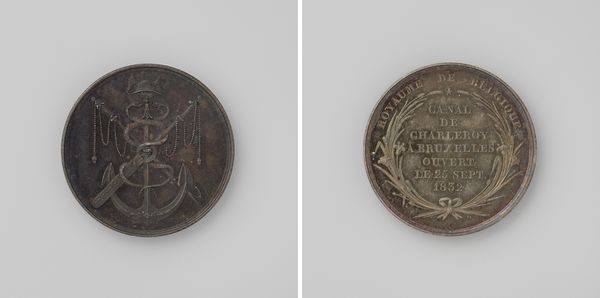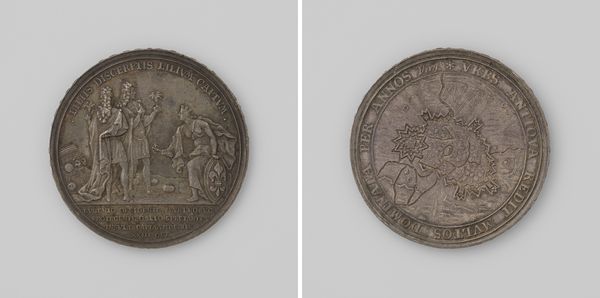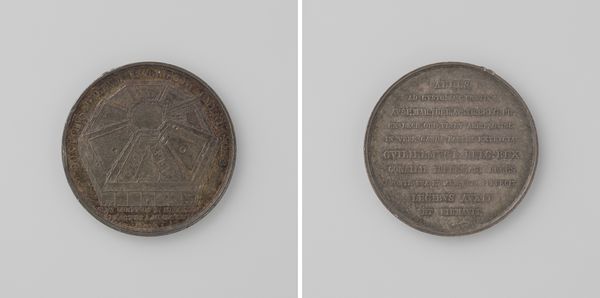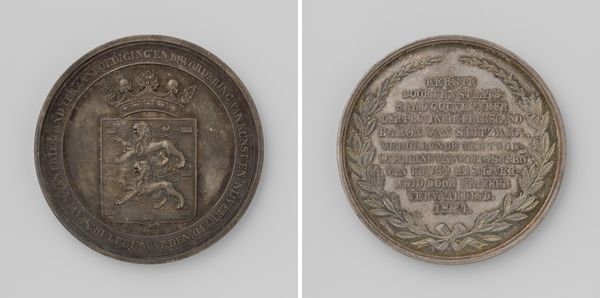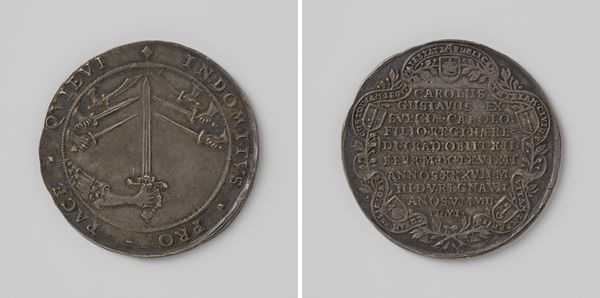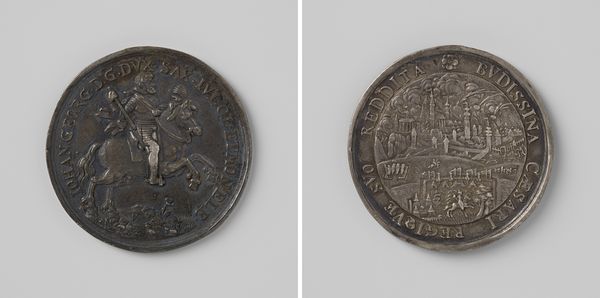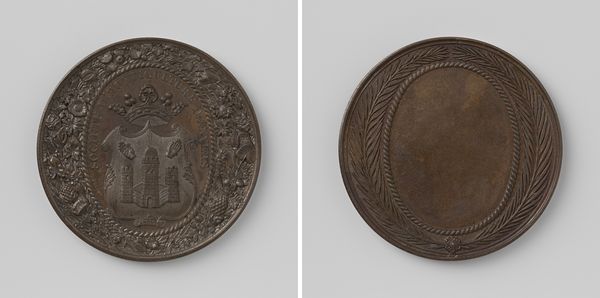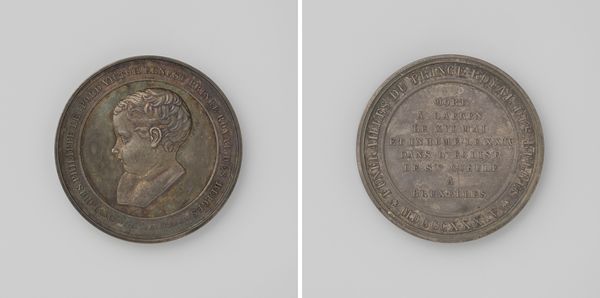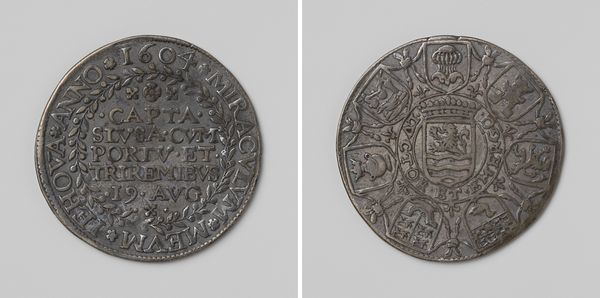
Het vaandel der compagnie "de swarte knegten" te Utrecht onder bevel van kapitein J. van Dam overgebracht naar mr. W. W. du Pon 1759
0:00
0:00
print, metal, relief, engraving
#
baroque
#
dutch-golden-age
# print
#
metal
#
relief
#
ceramic
#
history-painting
#
decorative-art
#
engraving
Dimensions: diameter 3.1 cm, weight 7.39 gr
Copyright: Rijks Museum: Open Domain
Curator: This striking medal, "Het vaandel der compagnie 'de swarte knegten' te Utrecht onder bevel van kapitein J. van Dam overgebracht naar mr. W. W. du Pon," was crafted in 1759 by Johann Conrad Marmé. It seems to be an engraving on metal, possibly silver, judging by its patina. Editor: It feels very commemorative and heraldic. There is definitely a somber, almost austere quality to the monochromatic rendering of these intricate symbols. Curator: It's fascinating how much information Marmé packed onto such a small surface. You see the coat of arms, banners, and inscriptions commemorating the transfer of command within the Utrecht militia. The detail speaks to the meticulous labour involved. Editor: And think about that militia – the 'Black Servants' – within the social landscape of 18th-century Utrecht. How does their story fit into the broader narratives of class, power, and local politics? This artwork serves as a record, hinting at so many power structures, particularly their position relative to the elite Mr. du Pon, to whom the banner was transferred. Curator: Absolutely. The materials also carry meaning; the silver reflects wealth and status. Moreover, the engraving technique itself, with its fine lines and precise execution, was a craft that elevated utilitarian objects into statements of prestige. It demonstrates the merging of artisanship and artistry. Editor: And the choice of imagery reinforces this. The heraldry displayed wasn't just decorative; it was actively communicating lineage, alliance, and rights in a deeply stratified society. We have to read it in the context of the Dutch Republic. Curator: I agree completely. Looking closely, the relief almost mimics wax seals. To have such information passed around would make even a material object so crucial for historical and economic data. Editor: Thinking of the labour embedded in its creation makes it a material manifestation of these hierarchical societal systems. From the engraver and silversmith's meticulous labor to the social weight borne by every carefully rendered symbol, these medals can become tools to unlock different understandings of history. Curator: It prompts us to consider not just the “who” and “when,” but also the "how" and "why" things were made, distributed, and received in their time. Editor: A really vital point that allows us to move beyond just celebratory tales.
Comments
No comments
Be the first to comment and join the conversation on the ultimate creative platform.

